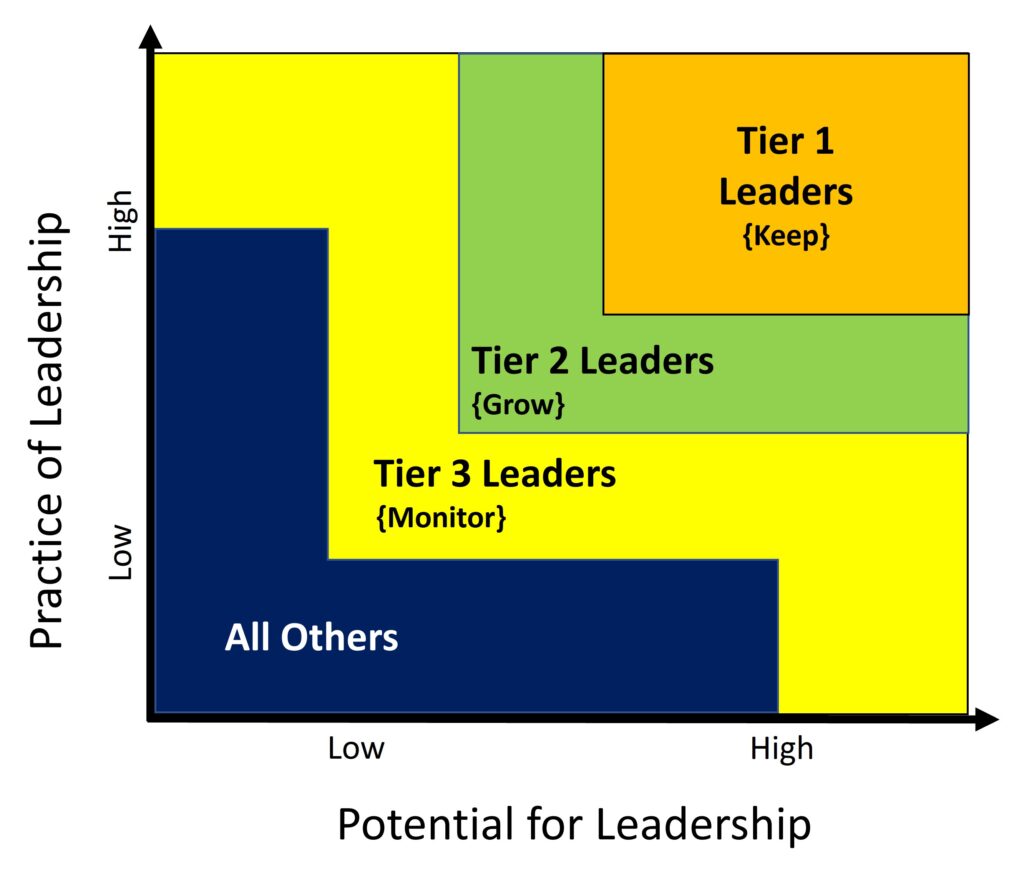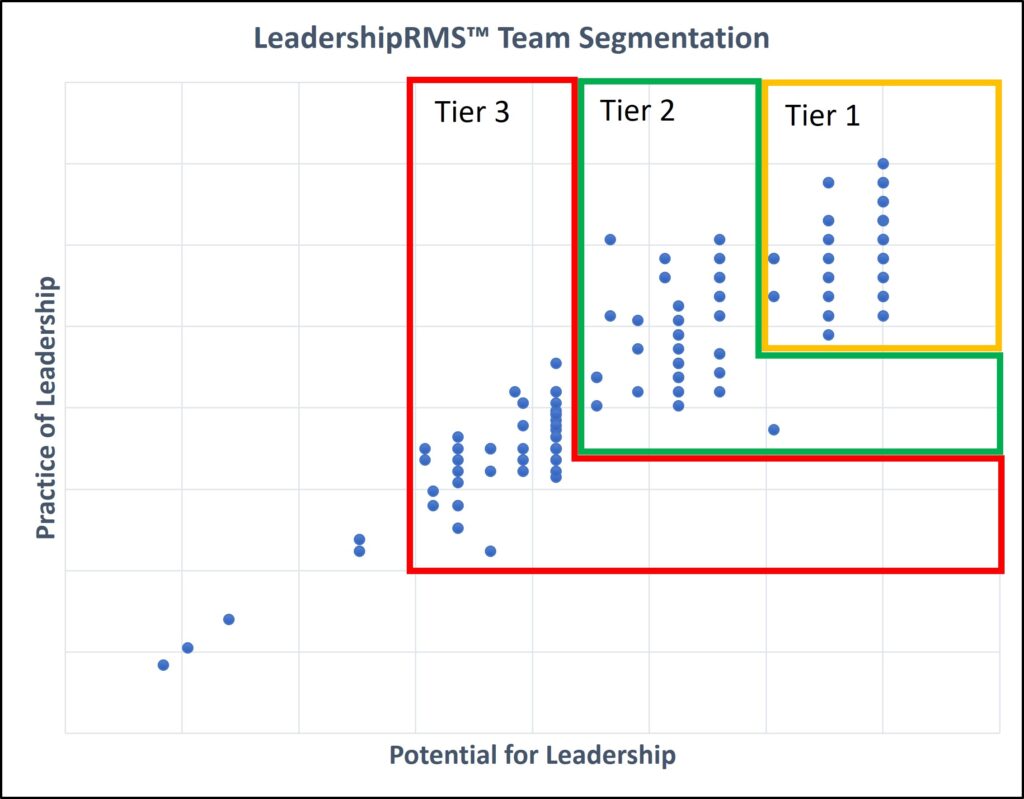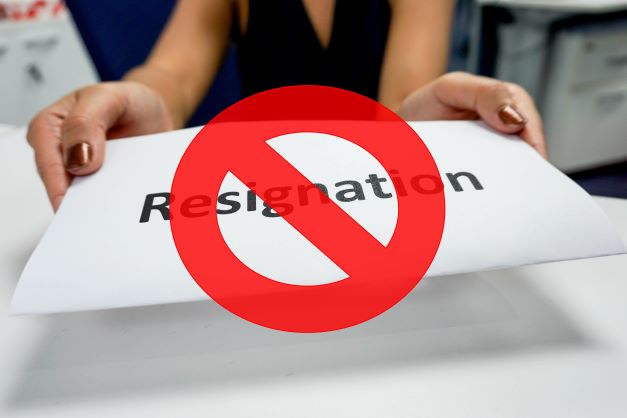Organizations lose good people every year. In this current era of workforce disruptions, the losses can be even worse. The challenge for organizations is to minimize the loss of their best leaders. This has implications not just for the current year but could reverberate for years to come from an interruption of your leadership pipeline. There are two strategies organizations should deploy immediately to minimize the loss of their best leaders in 2023 and beyond, including:
- Identifying your organization’s best leaders and implementing strategies to better retain them.
- Identifying challenging work environments with potentially toxic or dysfunctional teams within your organization.
Identifying Best Leaders

Identifying your best leaders enables the organization to segment their leaders into tiers and apply overall general management strategies to each one. Tier 1 contains the best leaders with the general strategy of keeping or retaining them as a top priority. Tier 2 contains the next level of leaders that you would like to grow into Tier 1 leaders. Tier 3 leaders should be monitored to determine if they can move up to a higher tier, stay in their current tier or fall into the ‘All Others’ tier.
To accomplish this, a quantifiable, repeatable, and unbiased tool is needed to assess the application of proven leadership behaviors. Our tool, the Leadership IMPACT Assessment measures 9 dimensions of leadership behaviors summarized into 2 categories: the Potential for Leadership and the Practice of Leadership. It replaces subjective interviews, relationship-based recommendations, and biased opinions with quantifiable data.
This assessment should include everyone in a leadership position, such as, senior executives, vice presidents, directors, supervisors and managers to receive the greatest impact. Once the organization’s leaders are assessed, their scores are plotted on a chart, which enables the tiers to be created. In the moderately complex segmentation pictured, the delineation of tiers is very clear.

Armed with this information, the organization should develop management strategies for all tiers, which creates organizational sustainability by creating a future bench of leaders throughout the organization. For this example, the focus will be on retaining the Tier 1 leaders. These strategies should go beyond financial incentives and should include strategies such as:
- Flexibility in their work schedule and environment
- Autonomy within their role to allow for new ideas to flourish
- Increased training support focused on developing the leadership skills within their teams
- Public recognition of their individual work accomplishments
- Assignment to new and/or interesting projects or initiatives
- Professional development opportunities such as conference attendance or training
Identifying Challenging Work Environments
Identifying challenging work environments is a bit more complex but just as important because if a talented leader is working for an ineffective team leader, they will most likely be dissatisfied with the situation and leave. The organization needs to identify these potential situations, investigate further to determine if it can be repaired and take the appropriate action – one way or another.

Using the data from the first analysis, the organization examines the data points by team relationship. The objective is to find good leaders working for lower tier team leaders. In the example, the team leader is in Tier 3 (red dot), while 2 members of their team are in Tier 2 (green dots) and 3 members are in Tier 1 (gold dots).
Workplace behaviors change with employees who aren’t a fit with their role. For example, if the team leader (red dot) is assessed at Tier 3 but manages Tier 1 or 2 staff we begin to see toxic behaviors that will prohibit productivity and thwart a positive culture. The leader might dip down to do the work of their subordinates, engage in micromanaging, or lay blame on their subordinates, while taking credit for accomplishments. For the Tier 1 employee reporting to a Tier 3 leader, they may engage in working around their boss, have a more holistic vision and strategic capabilities but will feel stifled and unable to bring their best capabilities to their work. No employee wants to stay in this situation for long, which will inevitably lead to job dissatisfaction and eventually departure.
Further investigation is needed to determine if the team leader can be improved through coaching or if the situation is unsalvageable. A team analysis where the leader is assessed by their supervisor, peers and direct reports using a modified version of the assessment tool can quickly identify if there is a toxic or dysfunctional work environment.
As previously stated, employee attrition is expected every year. The challenge is to minimize attrition of your best leaders. These strategies could help with that, but they should be implemented sooner, rather than later. If you would like to learn more about how we help organizations manage their leadership resources, please go to LeadershipRMS.com.



